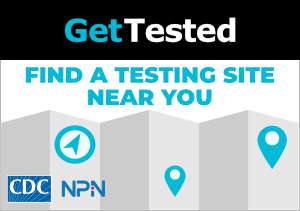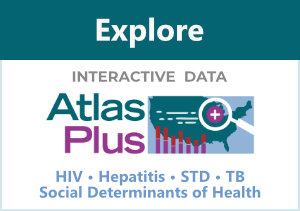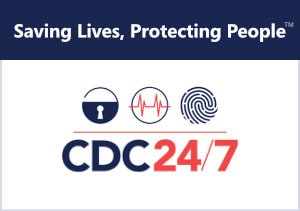NEEMA Funded Projects by Topic Area – Tuberculosis
NEEMA 2.0 (2019-2024)
From 2011 to 2020, Asian and Hispanic Americans comprised 34.7% and 28.8% of tuberculosis (TB) cases in the United States, respectively. Both populations are at an elevated risk of diabetes when compared to non-Hispanic White Americans. Diabetes has been shown to elevate the risk of developing TB disease among those with latent TB infection (LTBI). Employing a TTT intervention for LTBI among Asian and Hispanic Americans with diabetes may have the potential to reduce TB disease in the United States. This project uses a transmission-dynamic model of TB in the United States to estimate the impact of TTT among Asian and Hispanic Americans with diabetes at the national level.
The COVID-19 pandemic has likely had wide-ranging impact on different determinants of tuberculosis (TB) outcomes in the United States. Understanding the different pathways impacted, the relative magnitude, and implications for TB control strategies is important for continuing progress toward TB elimination. This project will estimate changes in different epidemiological drivers (immigration, case detection, transmission, competing mortality) in the United States that occurred during 2020 and 2021 as a result of the COVID-19 pandemic, and the impact of these changes on TB epidemiology and outcomes over the following 15 years, quantified as TB incidence and TB-associated mortality in the United States.
Trends in TB incidence among the elderly are of programmatic and scientific interest. Much of the older U.S. population has had greater exposure to TB infection and has a higher prevalence of LTBI compared to younger populations. TB incidence rates are also known to be higher in the elderly. It has been hypothesized that the risks of progression to TB from prior LTBI increase with older age, due to either immunosenescence or incidence of known medical risks, such as diabetes or cancer, arising later in life. Only a small percentage of TB cases in older cohorts are thought to be due to recent infection. This analysis will investigate trends in TB incidence and reactivation of LTBI among US-born persons aged 50 years and older in the United States. Specifically, the analysis will describe how TB incidence rates within the older cohort changed from 1993 to 2018, and how trends in earlier birth cohorts compare with those of later birth cohorts.
More than 80% of tuberculosis (TB) cases in the United States result from reactivation of LTBI. For this reason, identifying and treating individuals with LTBI is a primary focus of TB prevention. Evidence suggests that LTBI reactivation rates vary by age and time since infection, as well as the presence of risk factors associated with minor (e.g., smoking, diabetes, under-nutrition) or major (e.g., advanced HIV, end-stage renal disease) immune suppression. Estimates of current and future LTBI reactivation rates among at-risk populations are critical inputs for cost-effectiveness analyses of LTBI testing and treatment as these rates determine the cumulative TB risk that can be averted by such interventions. Reactivation rates are also important inputs for analyses investigating the current status and future course of population-level TB epidemiology. Despite their importance, reactivation rate estimates for different population groups are either unavailable or are relatively uncertain. This analysis will use a Bayesian evidence synthesis to estimate the distribution of likely reactivation rates for key populations at increased risk for TB. Furthermore, these rates will be projected to estimate cumulative lifetime reactivation risks.
Information on the costs and health outcomes of TB services, such as testing and treatment for LTBI to prevent TB progression, is important for national, state, and local TB decision-making. Knowing the potential epidemiologic and economic impact of TB services, including across populations at risk, allows agencies to allocate resources to maximize health impact and to target interventions across risk populations. Locally tailored evidence on the short- and long-term costs of TB and LTBI, as well as interventions to address these conditions, would also help local areas communicate to local officials, media, and community members the importance of TB prevention and the funding required to effectively address the burden of TB and LTBI. This work will extend the functionality of the existing user-friendly tool, Tabby2, by providing locally tailored results for all 50 states and the District of Columbia and by broadening the functionality of the tool to report future costs and cost-savings associated with TB and TB interventions.
While TB transmission rates have declined nationally in the United States during the last two decades – owing largely to TB control efforts – responding to TB outbreaks (which often occur among people experiencing homelessness or incarceration) to prevent further transmission, remains an important priority for TB control. This project will collaborate closely with DTBE and state-level TB controllers to develop TB outbreak models in the .US. These proposed models will focus on large TB outbreaks and aim to estimate the epidemiological impact and cost-effectiveness of TB outbreak response in the U.S.
TB transmission in the United States is both heterogeneous, with a few cases contributing to a large proportion of recent transmission, and disproportionately burdensome to disadvantaged populations – including racial and ethnic minorities, as well as people experiencing homelessness, who are incarcerated, and who use drugs (injection and non-injection). Public health efforts to reduce TB transmission have been instrumental in lowering incidence in the U.S. in the last few decades, but these interventions can be resource intensive. This project aims to better understand tuberculosis genotype clusters in the United States and across four key states (CA, FL, NY, TX) in order to identify targeted interventions that are feasible to implement, might be prioritized by TB controllers and other health officials, and are likely to be impactful in reducing the risk of TB transmission and outbreaks, especially in vulnerable populations.
The United States observed a sharp decline in TB incidence in 2020. Declines were pervasive, observed across almost all states, all age strata, both US- and non-US-born populations, and across all subpopulations disaggregated by race or ethnicity. The COVID-19 pandemic resulted in drastic changes that would be expected to result in short-term declines in TB notifications – but the implications for TB control differ tremendously, providing a unique opportunity to better understand how to control TB in the longer term, irrespective of the pandemic itself. This project will expand a previously developed model-based framework to include mechanisms of change in TB transmission and epidemiology as a result of COVID-19-related disruptions. Using this updated model, the project aims to offer a better understanding of TB transmission and notification patterns following COVID-19 disruptions in CA, FL, NY, and TX, and to project changes in TB trends over the next 20 years in these four target states.
The majority of TB cases in the United States arise in the non-US-born population, and many of these TB cases are due to infections acquired abroad. Rising TB among non-US-born individuals has slowed the rate of decline in overall US TB incidence, and there is concern that trends in non-US-born TB will impede efforts to achieve long-term TB elimination goals for the United States. Past studies have demonstrated that: (a) strengthening domestic TB prevention activities (in particular, expanded access to targeted testing and treatment for LTBI) can substantially accelerate the rate of decline in TB incidence in the US, in addition to providing important individual health benefits; and (b) that improved global TB control, particularly among the countries that represent a large share of US TB cases, can also lead to substantial reductions in future US TB cases. These prior analyses investigated separate mechanisms for accelerating declines in TB cases in the United States, raising the prospect that coordinated action on both fronts—that is, improvements in global TB control paired with improvements in domestic TB prevention—may allow the US to achieve TB elimination goals over a shorter duration than envisaged by earlier analyses. This project aims to analyze the combination of strengthened domestic and international TB control activities, and what this would mean for future TB case trends in the United States.
Many individuals who survive TB disease experience extended morbidity, and observational studies have estimated substantially higher all-cause mortality rates among post-TB individuals compared to their matched controls. However, there is less US-based evidence on the economic effects of TB during and after the disease episode. Estimating the causal impact of TB on long-term outcomes is challenging, as individuals who develop TB have a higher prevalence of other risk factors for mortality and ill health that are not causally attributable to TB. Therefore, naïve comparisons of TB survivors with TB-free controls can overestimate the health risks due to TB. Nevertheless, available evidence suggests these health risks are substantial. This project will summarize evidence quantifying the causal effect of TB on health care utilization, morbidity, and mortality of TB patients after their initial diagnosis, including taking account of comorbid conditions.
In 2020, the population enrolled in Medicare (Part A and or B) was 62.8 million, of which 54.5 million were eligible due to being aged 65 or over. This older population represents 17% of the US general population and includes individuals with higher average LTBI prevalence (when compared to the general population due to greater lifetime exposure) and elevated TB incidence rates (when compared to younger age groups). Expanding access to LTBI testing and treatment with no cost sharing for the Medicare population could identify and treat persons living with LTBI and reduce TB incidence rates in this population. Doing so could accelerate declines in TB incidence within the US and prevent TB disease in a group with higher TB case fatality rates. This project will support and inform the testing and treatment needs for LTBI among the Medicare population and will also add to the literature on the benefits of LTBI treatment by age, as there are currently no/few estimates of the impact of testing and treating by age group.


